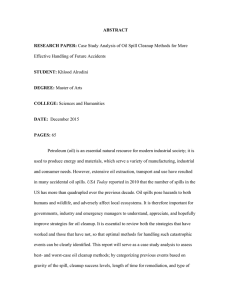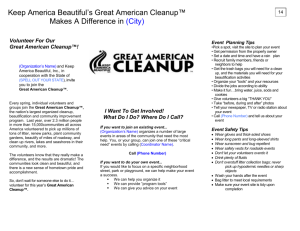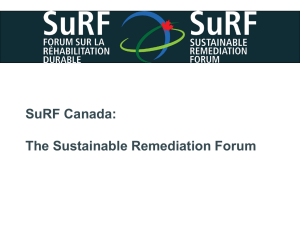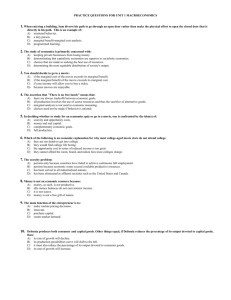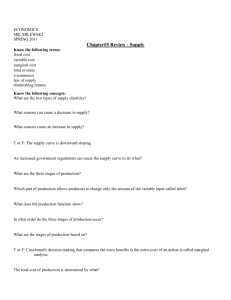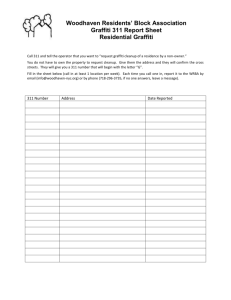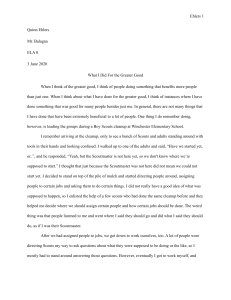Quiz 10d
advertisement
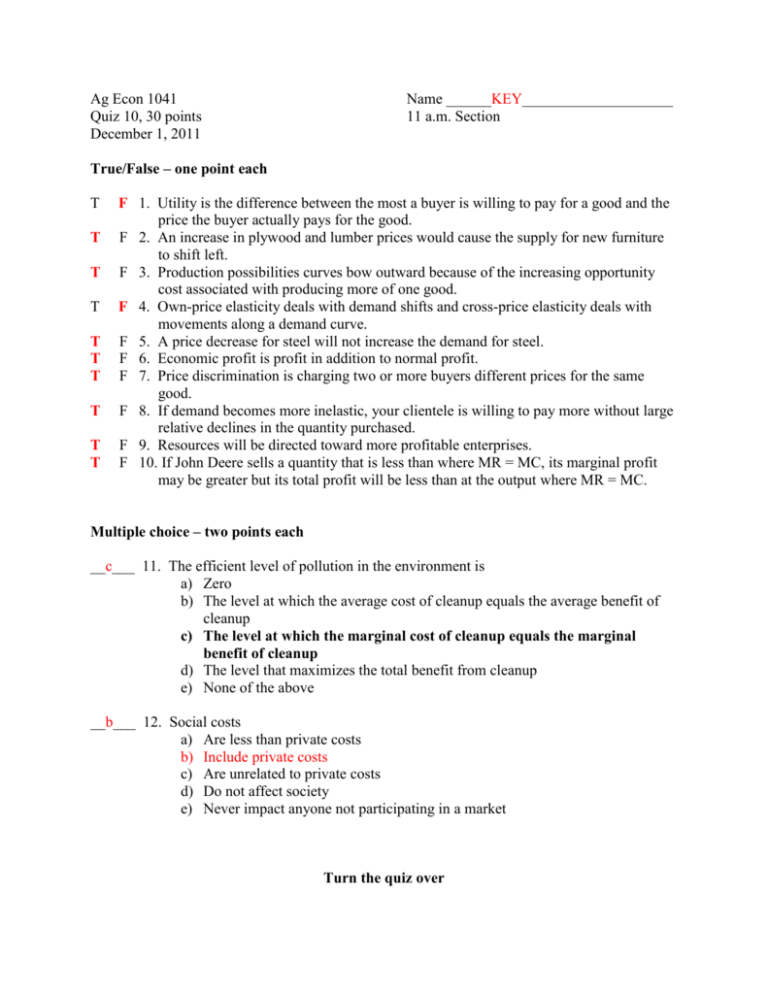
Ag Econ 1041 Quiz 10, 30 points December 1, 2011 Name ______KEY____________________ 11 a.m. Section True/False – one point each T T T T T T T T T T F 1. Utility is the difference between the most a buyer is willing to pay for a good and the price the buyer actually pays for the good. F 2. An increase in plywood and lumber prices would cause the supply for new furniture to shift left. F 3. Production possibilities curves bow outward because of the increasing opportunity cost associated with producing more of one good. F 4. Own-price elasticity deals with demand shifts and cross-price elasticity deals with movements along a demand curve. F 5. A price decrease for steel will not increase the demand for steel. F 6. Economic profit is profit in addition to normal profit. F 7. Price discrimination is charging two or more buyers different prices for the same good. F 8. If demand becomes more inelastic, your clientele is willing to pay more without large relative declines in the quantity purchased. F 9. Resources will be directed toward more profitable enterprises. F 10. If John Deere sells a quantity that is less than where MR = MC, its marginal profit may be greater but its total profit will be less than at the output where MR = MC. Multiple choice – two points each __c___ 11. The efficient level of pollution in the environment is a) Zero b) The level at which the average cost of cleanup equals the average benefit of cleanup c) The level at which the marginal cost of cleanup equals the marginal benefit of cleanup d) The level that maximizes the total benefit from cleanup e) None of the above __b___ 12. Social costs a) Are less than private costs b) Include private costs c) Are unrelated to private costs d) Do not affect society e) Never impact anyone not participating in a market Turn the quiz over __d___ 13. The use of emission charges force firms to internalize external costs thus impacting a) A firm’s production decision b) A firm’s profitability c) A firm’s long run plans d) All of the above e) None of the above __d___ 14. The production possibilities curve shows that a) Production possibilities for an economy or firm are limited b) The production of all goods involves opportunity costs c) Producing more of one god means producing less of another good d) All of the above e) None of the above __d___ 15. All of the following are factors that can shift the demand curve, except a) The price of related good b) Income c) Preferences d) The price of the good itself e) Number of buyers Five points each 16. Diagram the situation where the government imposes a price support or floor. Show the change in market outcomes and changes in consumer surplus. S Pf P0 D 0 Qd Q0 Qs 17. Illinois can produce more corn or more pork (hogs) than Iowa. Why does Iowa actually produce more pork? It has a comparative advantage


